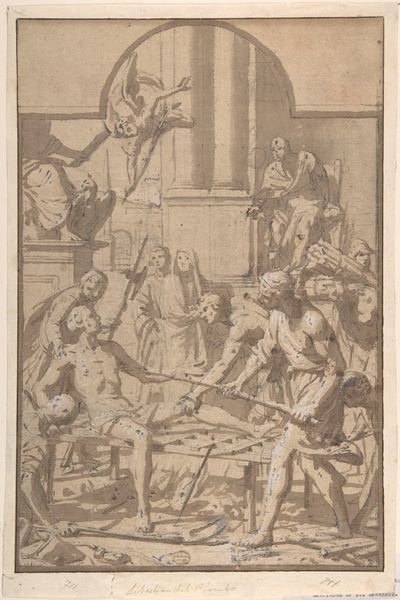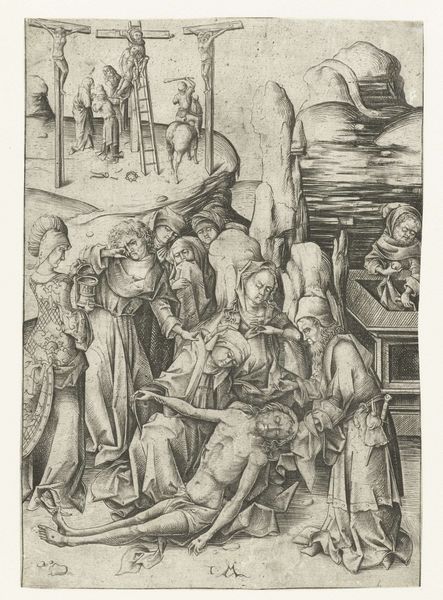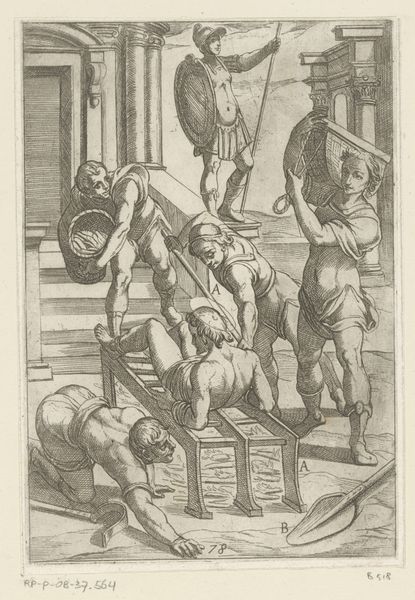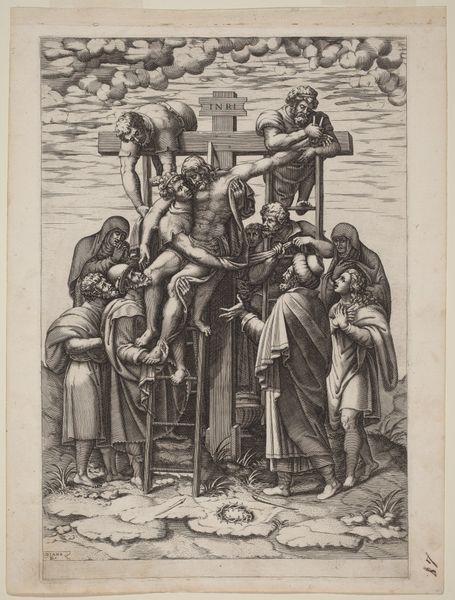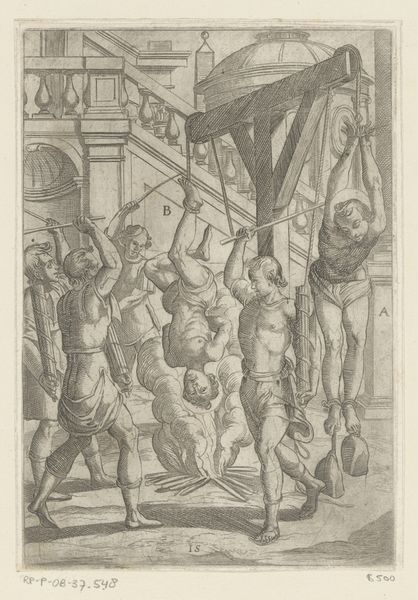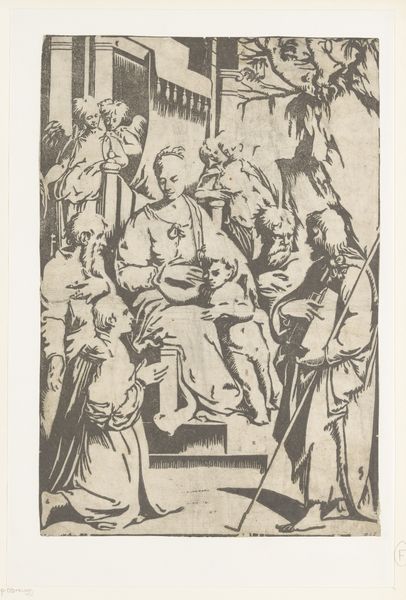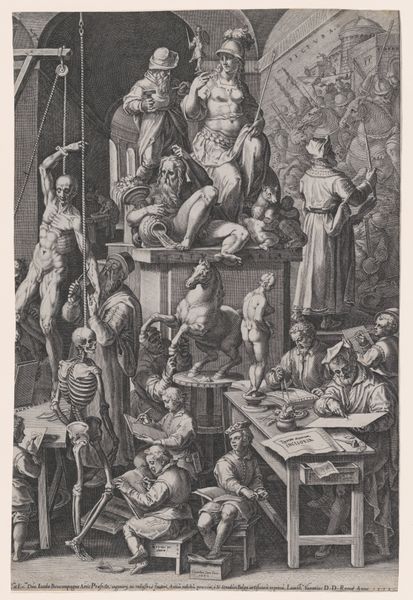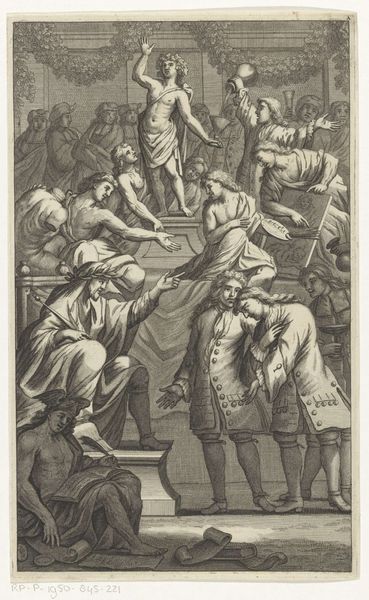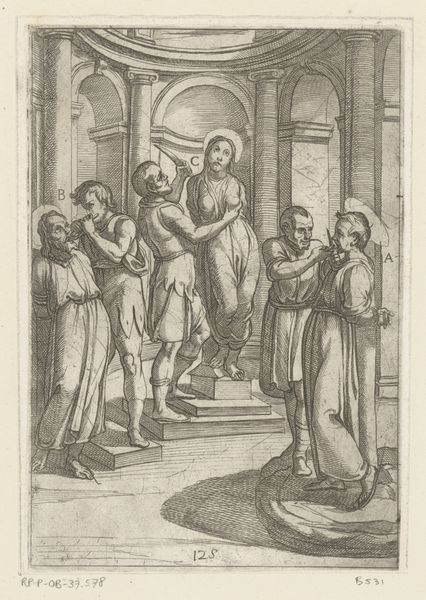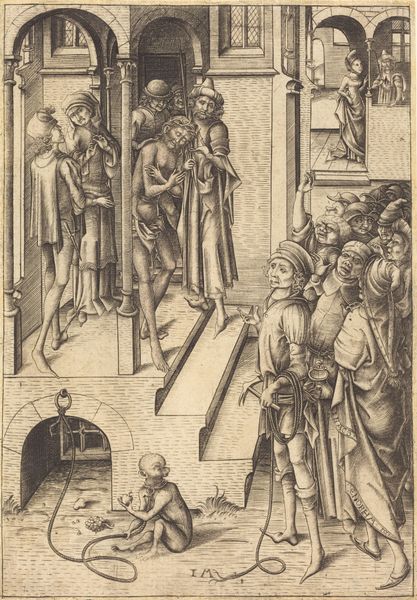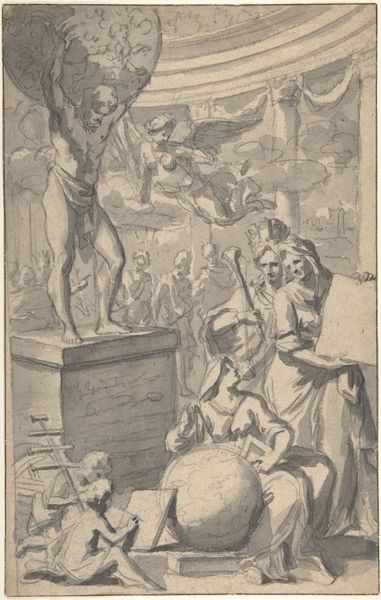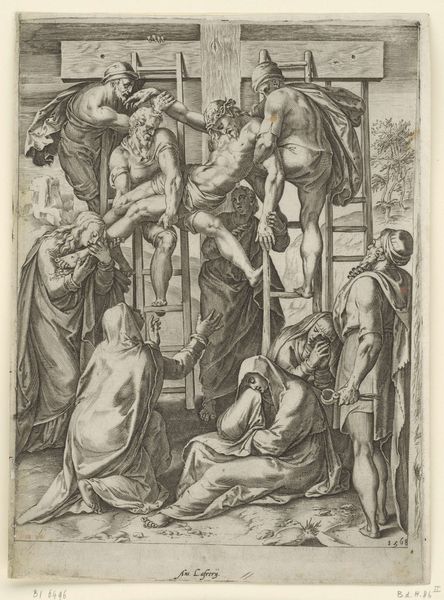
print, engraving
#
baroque
# print
#
pen illustration
#
old engraving style
#
figuration
#
history-painting
#
engraving
Dimensions: height 194 mm, width 133 mm
Copyright: Rijks Museum: Open Domain
Editor: Here we have Antonio Tempesta’s print, “Foltering: gedwongen arbeid,” made sometime between 1565 and 1630. The linear detail and shading is fascinating. What jumps out to you in terms of its social or historical relevance? Curator: Well, this piece really highlights the relationship between art and power structures. Look at how forced labor is depicted almost as a matter of course. It invites us to think about how such scenes were not only acceptable but even celebrated or, at least, rendered invisible through artistic convention at that time. Notice how each worker bears a halo. Editor: That's a startling juxtaposition! What do you make of it? Curator: It likely signifies martyrdom or sainthood associated with enduring hardship, perhaps even framing the act of forced labor itself as a holy suffering. How might an image like this influence or reflect societal attitudes towards labor and suffering? Editor: It’s interesting how art can normalize historical power imbalances. Did prints like these function as propaganda? Curator: Indeed. Prints were a primary means of disseminating ideas. This image, while seemingly just depicting a work scene, participates in a broader cultural discourse around duty, suffering, and authority. Consider how it might have reinforced the perceived natural order for different social classes. Does the technical rendering of the figures provide any clues? Editor: Perhaps, their idealized physiques and dedicated expressions make their work appear virtuous rather than dehumanizing. Thinking about the politics of imagery really shifts how I see this print. Curator: Exactly. And that’s how understanding the historical and social context enables us to engage with art in a more meaningful way, even centuries later. It challenges us to confront uncomfortable truths about our own values, doesn't it? Editor: Definitely, I'm finding a renewed appreciation for historical prints beyond just their aesthetics. Thanks!
Comments
No comments
Be the first to comment and join the conversation on the ultimate creative platform.
